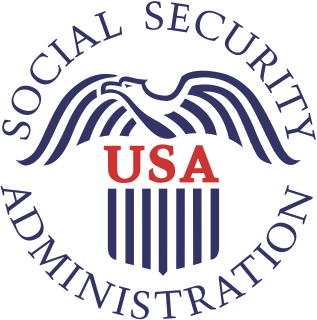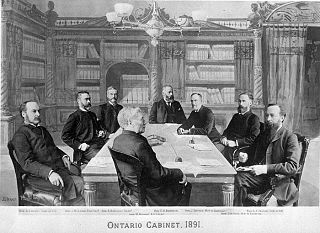Welfare is a type of government support for the citizens of that society. Welfare may be provided to people of any income level, as with social security, but it is usually intended to ensure that the poor can meet their basic human needs such as food and shelter. Welfare attempts to provide poor people with a minimal level of well-being, usually either a free- or a subsidized-supply of certain goods and social services, such as healthcare, education, and vocational training.
Welfare reforms are changes in the operation of a given welfare system, with the goals of reducing the number of individuals dependent on government assistance, keeping the welfare systems affordable, and assisting recipients become self-sufficient. Classical liberals, libertarians, and conservatives generally argue that welfare and other tax-funded services reduce incentives to work, exacerbate the free-rider problem, and intensify poverty. Socialists, on the other hand, generally criticize welfare reform because it usually minimizes the public safety net, and strengthens the capitalist economic system. Welfare reform is constantly debated because of the varying opinions on the government's determined balance of providing guaranteed welfare benefits, and promoting self-sufficiency.
The Workforce Investment Act of 1998 was a United States federal law that was repealed and replaced by the 2014 Workforce Innovation and Opportunity Act.
The Administration for Children and Families (ACF) is a division of the United States Department of Health and Human Services (HHS). It is headed by the Assistant Secretary for Children and Families. It has a $49 billion budget for 60 programs that target children, youth and families. These programs include assistance with welfare, child support enforcement, adoption assistance, foster care, child care, and child abuse.
Workfare is an alternative, and controversial, way of providing money to otherwise unemployed or underemployed people, who are applying for social benefits. The term was first introduced by civil rights leader James Charles Evers in 1968; however, it was popularized by Richard Nixon in a televised speech August 1969. An early model of workfare had been pioneered in 1961 by Joseph Mitchell in Newburgh, New York.

The Rehabilitation Act of 1973,, is a federal law, codified as 29 U.S.C. § 701 et seq. The principal sponsor of the bill was Rep. John Brademas [IN-3]. The Rehabilitation Act of 1973 replaces the Vocational Rehabilitation Act of 1973, to extend and revise the authorization of grants to States for vocational rehabilitation services, with special emphasis on services to those with the most severe disabilities, to expand special Federal responsibilities and research and training programs with respect to individuals with disabilities, to establish special responsibilities in the Secretary of Health, Education, and Welfare for coordination of all programs with respect to individuals with disabilities within the Department of Health, Education, and Welfare, and for other purposes.
The Assured Income for the Severely Handicapped (AISH) is the legal name of a social welfare program and service offered only in Alberta, Canada, to nearly 46,000 Albertans.
A group home is a private residence model of medical care for those with complex health needs. Traditionally, the model has been used for children or young people who cannot live with their families, people with chronic disabilities who may be adults or seniors, or people with dementia and related aged illnesses. Typically, there are no more than six residents, and there is at least one trained caregiver there 24 hours a day. In some early "model programs", a house manager, night manager, weekend activity coordinator, and 4 part-time skill teachers were reported. Originally, the term group home referred to homes of 8 to 16 individuals, which was a state-mandated size during deinstitutionalization. Residential nursing facilities, also included in this article, may be as large in 2015 as 100 individuals, which is no longer the case in field such as intellectual and developmental disabilities. Depending on the severity of the condition requiring one to need to live in a group home, some clients are able to attend day programs and most clients are able to live normal lifestyles.
John Yaremko, was a politician in Ontario, Canada. He was a Progressive Conservative member of the Legislative Assembly of Ontario from 1951 until 1975 who represented the downtown Toronto riding of Bellwoods. He was the first Ukrainian-Canadian to be elected to the Ontario legislature.
The Ministry of Social Development (MSD) is the public service department of New Zealand charged with advising the government on social policy, and providing social services.
Social security, in Australia, refers to a system of social welfare payments provided by Commonwealth Government of Australia. These payments are administered by Centrelink, a branch of the Department of Human Services. In Australia, most benefits are means tested.

The Ontario Disability Support Program (ODSP) is a means-tested government-funded last resort income support paid for qualifying residents in the province of Ontario, Canada, who are above the age of 18 and have a disability. ODSP and Ontario Works (OW) are the two main components of Ontario's social assistance system. Like most social programs in Canada, the program is funded by the government of the province. The Ministry of Community and Social Services is responsible for ODSP and OW.
Social programs in Canada include all government programs designed to give assistance to citizens outside what the market provides. The Canadian social safety net covers a broad spectrum of programs, and because Canada is a federation, many are run by the provinces. Canada has a wide range of government transfer payments to individuals, which totaled $176.6 billion in 2009. Only social programs that direct funds to individuals are included in that cost; programs such as medicare and public education are additional costs.

Social programs in the United States are welfare subsidies designed to meet needs of the American population. Federal and state welfare programs include cash assistance, healthcare and medical provisions, food assistance, housing subsidies, energy and utilities subsidies, education and childcare assistance, and subsidies and assistance for other basic services. Private provisions from employers, either mandated by policy or voluntary, also provide similar social welfare benefits.
The New York State Office of Children and Family Services (OCFS) is an agency of the New York state government within the Department of Family Assistance. The office has its headquarters in the Capital View Office Park in Rensselaer.
Florida Division of Vocational Rehabilitation is a federal-state program in the U.S. state of Florida that provides services to people who have physical or mental disabilities to help them get or keep a job. VR is committed to helping people with disabilities find meaningful careers.
The Family Eviction Prevention Supplement was created by the New York City Human Resources Administration in May 2005 as a program to help prevent evictions of families on welfare shelter. It provides additional housing assistance to Cash Assistance (CA) eligible families with children, above and beyond the CA shelter amount.
The Human Resources Administration or Department of Social Services (HRA/DSS) is the department of the government of New York City in charge of the majority of the city's social services programs. HRA helps New Yorkers in need through a variety of services that promote employment and personal responsibility while providing temporary assistance and work supports. Its regulations are compiled in title 68 of the New York City Rules. The current Commissioner of HRA is Stephen Banks, who was appointed to the position in April, 2014 by Mayor Bill de Blasio. HRA is the largest city social services agency in the United States. It has a budget of $9.7 billion, employs over 14,000 people, and serves over 3 million New Yorkers.

Rise provides microfinancing and mentorship to entrepreneurs living with mental health and addiction challenges who are interested in pursuing self-employment. Business loans, leases, and other investments are offered depending on the stage of development, needs and capacity of each business. Rise provides business financing up to $25,000 throughout Ontario, with financing averaging from $3000 to $5000. The Rotman School of Management and Centre for Addiction and Mental Health participate in advisory functions, lending their respective expertise for business mentoring and mental health supports and services to the benefit of Rise clients. In January 2012, Rise received the Social Entrepreneurship in Mental Health Equity Award for Toronto social enterprises advancing mental health equity.
The California Work Opportunities and Responsibility to Kids (CalWORKs) program is the California welfare implementation of the federal welfare-to-work Temporary Assistance for Needy Families (TANF) program that provides cash aid and services to eligible needy California families.












